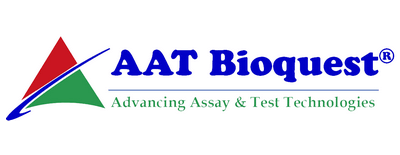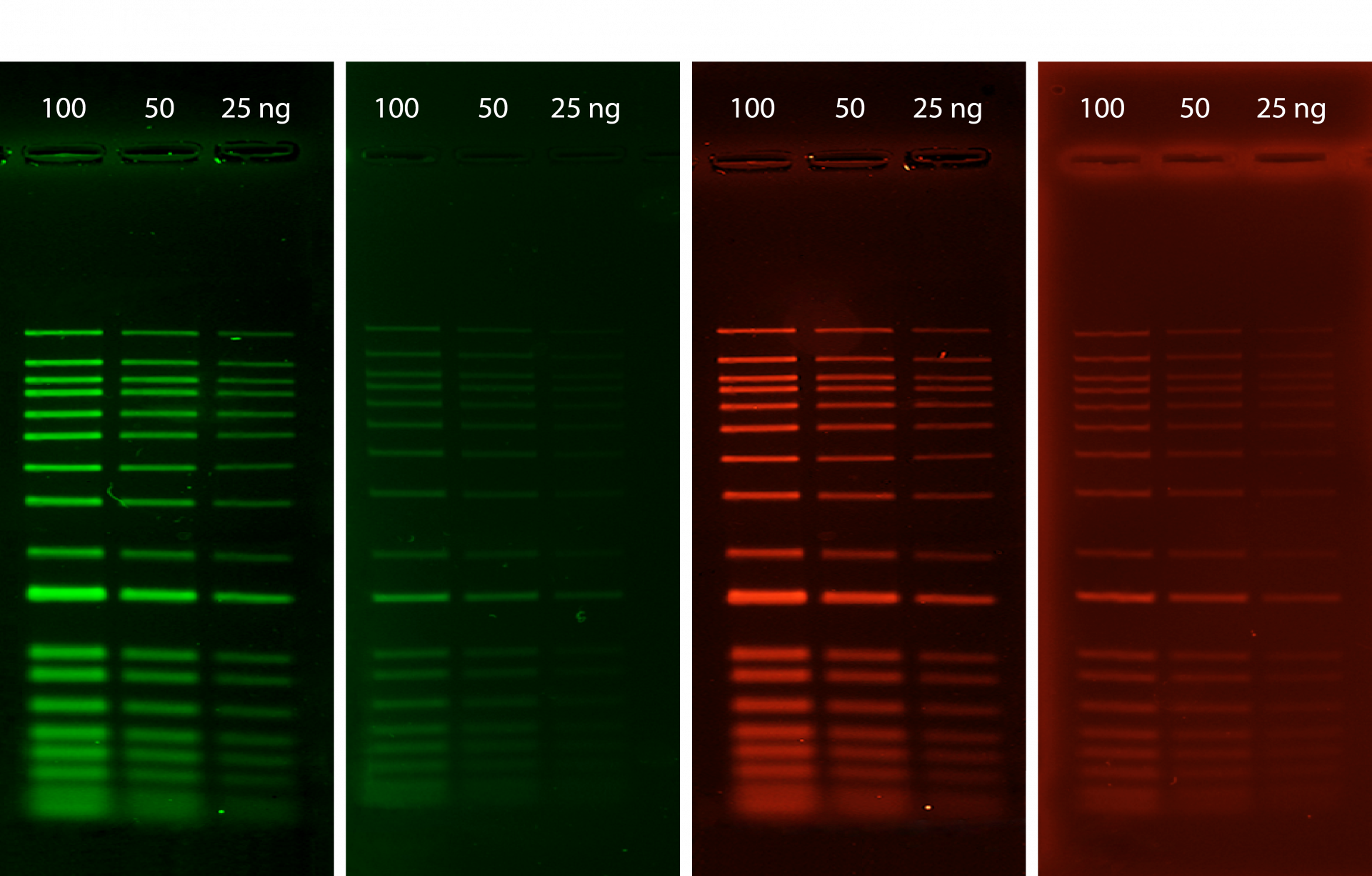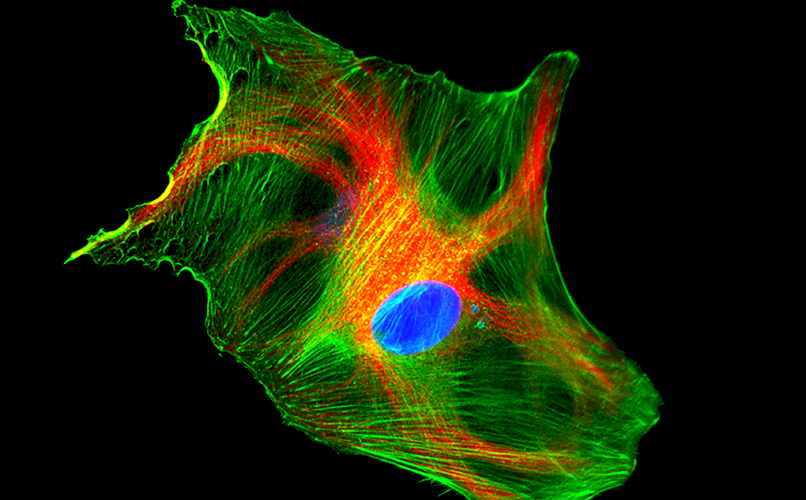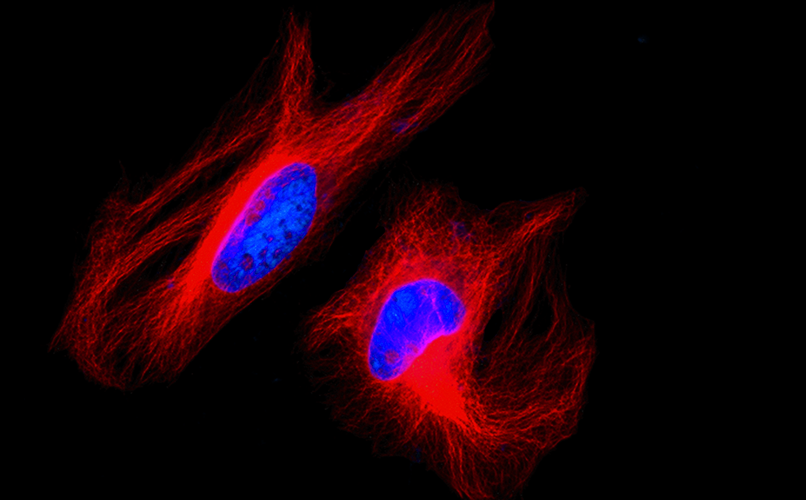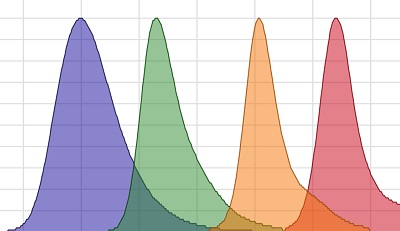Biotin and its derivatives
Keywords: conjugation, biotinylation, streptavidin, avidin, biotin, signal amplification, strong covalent bond, immunoassay
Biotin and its derivatives bind to streptavidin and avidin with an extremely high affinity, fast on-rate, and high specificity, and these interactions are exploited in many areas of biotechnology to detect biotinylated conjugates or isolate biotinylated molecules of interest. Since its inception AAT Bioquest has synthesized thousands of special biotin compounds for its customers.
Clickable probes
Keywords: clickable, click chemistry, dna modification, protein modification, carbohydrate modification, dbco
Click Chemistry is a reaction between azide and alkyne, yielding 1,5-disubstituted 1,2,3-triazole. This process is also known as CuAAC-Cu catalyzed alkyne azide cycloaddition. Click probes have become a powerful tool for modifying DNA, proteins, carbohydrates and other biological materials. Since its inception AAT Bioquest has synthesized thousands of special clickable probes for its customers. These compounds include DBCO, TCO, tetrazine, azide, alkyne, and other related molecules.
Crosslinkers
Keywords: crosslinking, homobifunctional, heterobifunctional, proteins, peptides, oligo, spacer, amine, thiol
Protein crosslinking agents possess reactive moieties specific to various functional groups (sulfhydryls, amines, carbohydrates, etc.) on proteins, peptides, or other molecular complexes. Homobifunctional crosslinker reagents have the same reactive group on both ends of the spacer arm (i.e., amine reactive-amine reactive); while heterobifunctional crosslinkers have different reactive groups on each end of a spacer arm (i.e., sulfhydryl reactive-amine reactive). Since its inception AAT Bioquest has synthesized hundreds of special homobifunctional and heterobifunctional crosslinkers for its customers. Some of these crosslinkers are cleavable by a desired special condition such as light, pH change, TCEP, DDT and other special reagents.
Enzyme inhibitors
Keywords: enzymes, inhibition, phosphatases, kinases, proteases, transferases, drug discovery, active site
An enzyme inhibitor is a molecule that binds to an enzyme and decreases its activity. Since blocking an enzyme’s activity can kill a pathogen or correct a metabolic imbalance, many drugs are enzyme inhibitors. They are also used in pesticides and other applications. AAT Bioquest offer services to design, screen and identify enzyme inhibitors using our novel enzyme activity and screening assays. We specialize in screening enzyme inhibitors for protein phosphatases, protein kinases, proteases and transferases.
Enzyme substrates
Keywords: substrate, enzymes, active site, chromogenic, fluorogenic, tmb, adhp, activity assay
Enzyme substrate is a molecule upon which an enzyme acts. Enzymes catalyze chemical reactions involving the substrate(s). In the case of a single substrate, the substrate bonds with the enzyme active site, and an enzyme-substrate complex is formed. The substrate is transformed into one or more products, which are then released from the active site. The active site is then free to accept another substrate molecule. In the case of more than one substrate, these may bind in a particular order to the active site, before reacting together to produce products. A substrate is called ‘chromogenic’ if it gives rise to a colored product when acted on by an enzyme. In histological enzyme localization studies, the colored product of enzyme action can be viewed under a microscope, in thin sections of biological tissues. Similarly, a substrate is called ‘fluorogenic’ if it gives rise to a fluorescent product when acted on by an enzyme.
Fluorescent probes
Keywords: fluorophore, excitation, emission, stokes shift, highly sensitive, microscopy, flow cytometry, microplate
Fluorescent probes are the molecules that absorb light of a specific wavelength and emit light of a different, typically longer, wavelength (a process known as fluorescence), and are used to study biological samples. The molecules, also known as fluorophores, can be attached to a target molecule and act as a marker for analysis with fluorescence microscopy. The use of fluorescent molecules in biological research is the gold standard in many applications, and their use is continually increasing due to their versatility, sensitivity and quantitative capabilities. AAT Bioquest is a leading company in developing novel fluorescent probes. Since its inception AAT Bioquest has synthesized thousands of novel fluorescent probes for its customers that have been incorporated into a broad range of biological detection technologies.
Hapten molecules
Keywords: haptens, immune response, antibodies, hapten-carrier adduct, proteins, klh, bsa, ova
Haptens are the small molecules that elicit an immune response only when attached to a large carrier such as a protein. In general, the carrier may be one that does not elicit an immune response by itself. Once the body has generated antibodies to a hapten-carrier adduct, the small-molecule hapten may also be able to bind to the antibody, but it will usually not initiate an immune response. In general, only the hapten-carrier adduct can do this. AAT Bioquest has custom-synthesized hundreds of special hapten molecules for its customers.
Luminescent compounds
Keywords: luminescence, emission, luciferin, quantification assay, microplate, acridium esters, dioxetanes, luminol
Luminescent compounds are widely used to develop extremely sensitive assays in which a luminescent signal (in the form of light, or photons) is generated via a chemical or biochemical reaction and measured using a plate reader. Luminescent techniques enable highest sensitivity and selectivity detection even within cells and tissue sections. Luminescence monitoring is usually rather simple and easily automated. AAT Bioquest uses its unique expertise to synthesize novel luminescent probes to meet its customers’ special needs. These novel luminescent probes include luciferin derivatives, acridium esters, dioxetanes, luminol and isoluminol analogs and conjugates.
